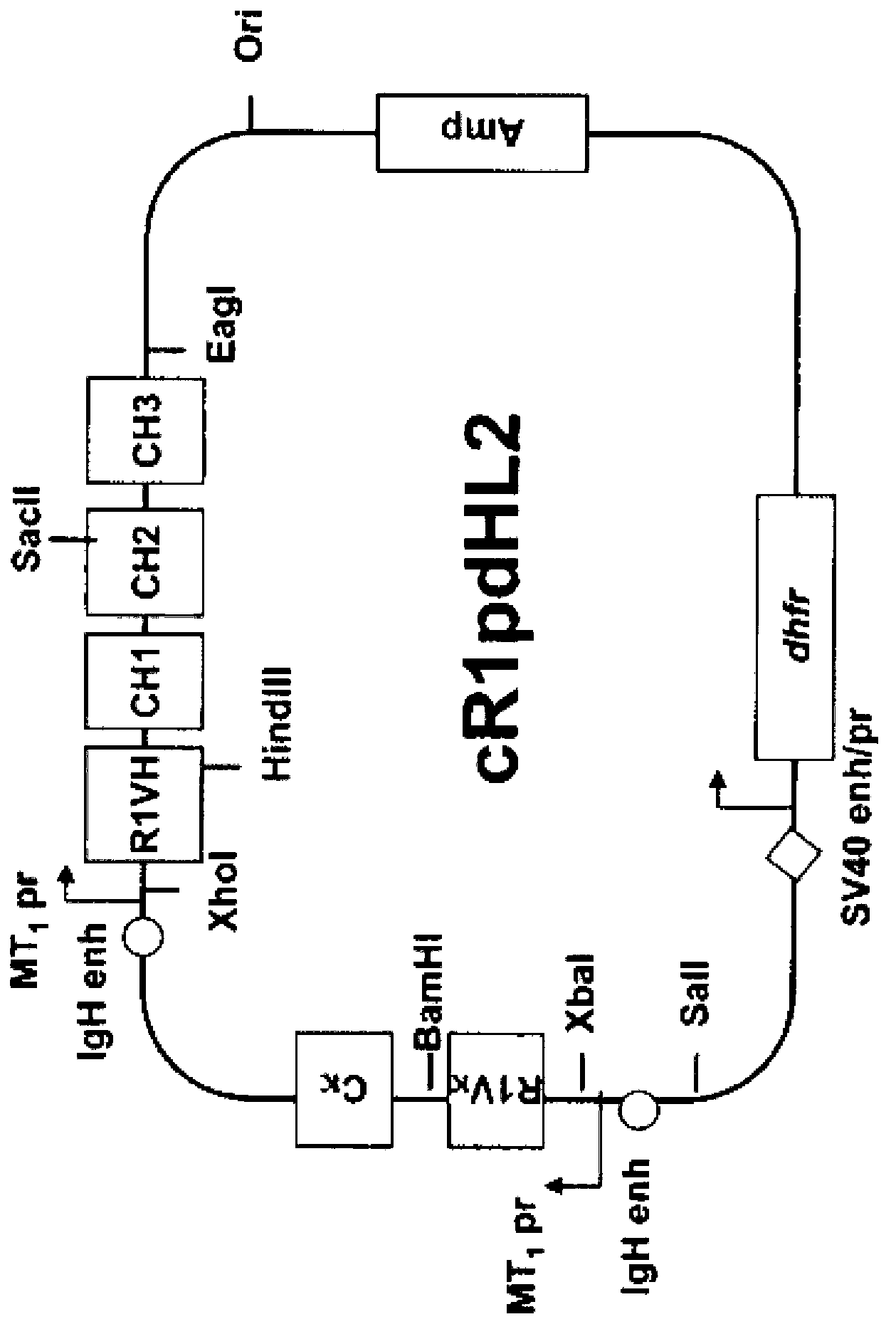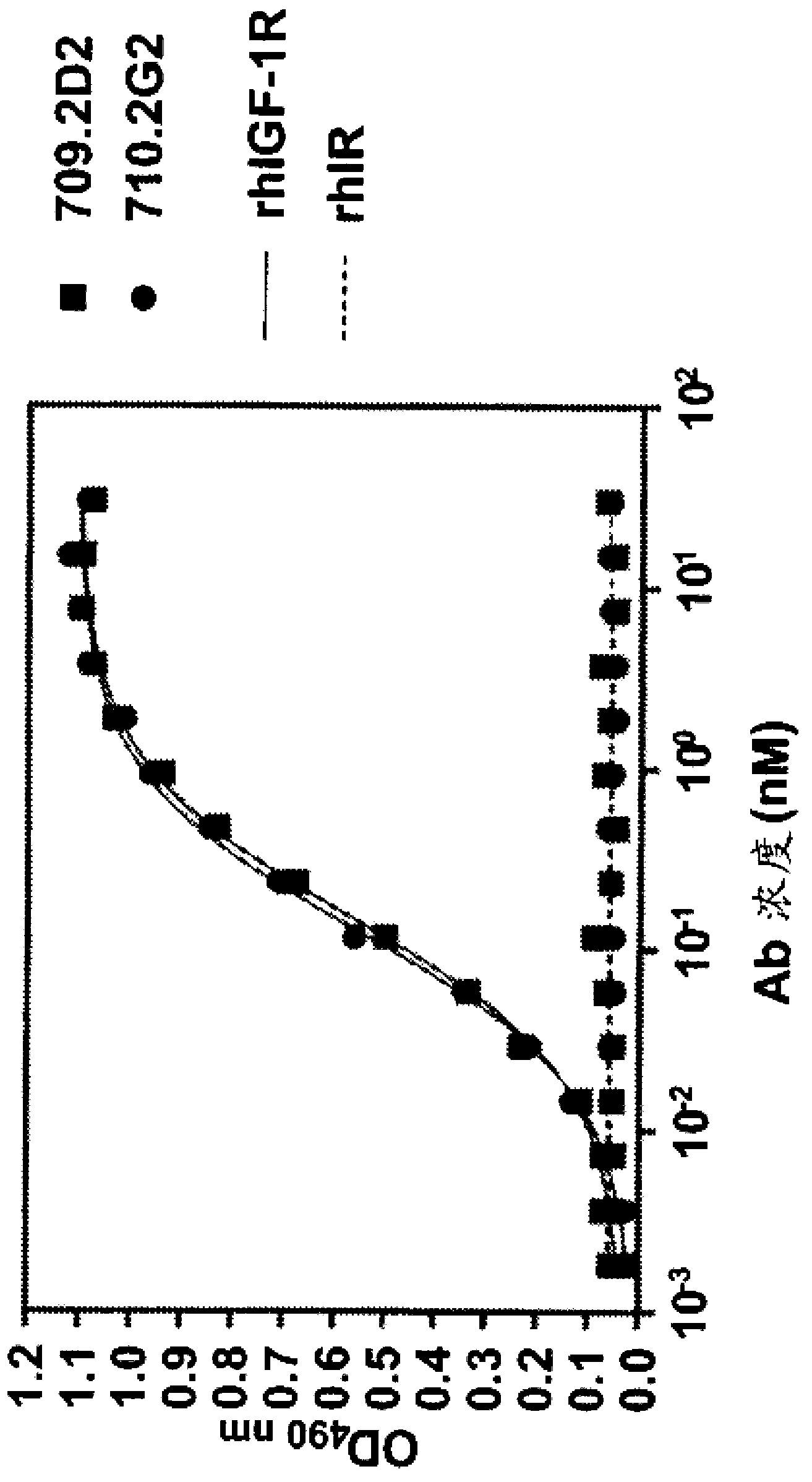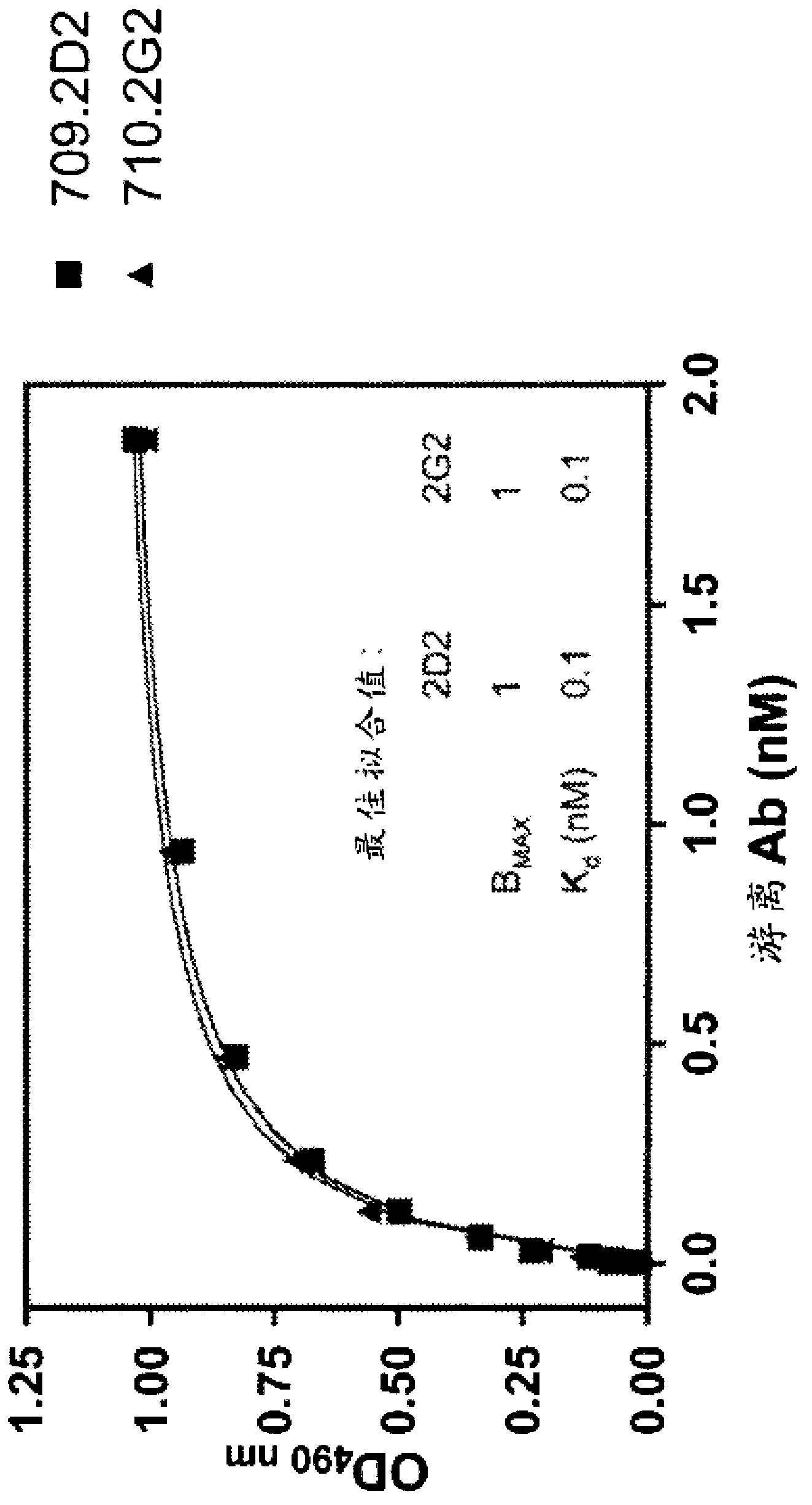Novel class of monospecific and bispecific humanized antibodies that target the insulin-like growth factor type i receptor (IGF-1R)
One-IGF-1R, IGF-1R technology, applied in the field of new monospecific and bispecific humanized antibodies targeting insulin-like growth factor type I receptor (IGF-1R), can solve toxicity, Restrictions and other issues
- Summary
- Abstract
- Description
- Claims
- Application Information
AI Technical Summary
Problems solved by technology
Method used
Image
Examples
Embodiment 1
[0217] Example 1. Generation and preliminary characterization of anti-IGF-1R antibodies: R1, cR1 and hR1
[0218] Each of 3 BALB / c mice was immunized intraperitoneally with 15 μg of recombinant human IGF-1R (R&D Systems, Catalog #391-GR) containing human IGF-1R in complete Freund's adjuvant. Processed and unprocessed extracellular domains of 1R. Additional immunizations in incomplete Freund's adjuvant were performed on days 14, 21 and 28 after the primary immunization. Splenocytes from immunized mice were fused with P3X63Ag8.653 cells according to standard protocols to generate hybridomas. One clone (C-11) expressing anti-IGF-1R but not anti-IR (insulin receptor) activity was isolated and expanded in culture to obtain a mouse antibody called ML04R1 or R1, which IgG1 / kappa shown to have the ability to inhibit the binding of radioiodinated IGF-1 to the IGF-1R expressing human breast cancer cell line MCF-7L (subline of MCF-7), which can be compared with commercially available ...
Embodiment 2
[0231] Example 2. Epitope mapping studies of R1, cR1 and hR1
[0232] To further map the region of IGF-1R where hR1 binds, a panel of commercially available anti-IGF-1R mAbs that had mapped their epitopes against IGF-1R were evaluated for their cross-blocking with IGF-1R coating the binding capacity of the beads. Figure 8 The results of two typical experiments are provided in A showing that the binding of R1 labeled with a fluorescent probe (PE) is not affected by even 100 μg / mL of MAB391, Figure 8 B shows that binding with PE-labeled MAB391 is only partially inhibited (50 to 60%) by 100 μg / mL of R1. Additional results summarized in Table 3A indicate that the epitope of R1 is located in the CR domain between aa 151 and 282 and can be further localized in the first half of the CR domain between aa 151 and 222 (Table 3B).
[0233] Table 3A Each labeled antibody (*) with rhIGF-1R-coated beads in the presence of unlabeled antibodies (24-31, 24-57, 17-69, 1-2, 1H7, 2C8, 3B7) %...
Embodiment 3
[0237] Example 3. Additional characterization of R1, cR1 and hR1
[0238] While IGF-1 stimulated the proliferation of MCF-7 cells grown in serum-free medium, resulting in a maximal effect of a 50% increase in viable cell counts at 100 ng / mL when compared to untreated controls at 48 hours, hR1 does not have this effect ( Figure 9 ). Thus hR1 does not antagonize the binding to IGF-1R. Internalization of hR1 into MCF-7 was observed at 37°C but not at 4°C (not shown).
PUM
| Property | Measurement | Unit |
|---|---|---|
| diameter | aaaaa | aaaaa |
Abstract
Description
Claims
Application Information
 Login to View More
Login to View More - R&D
- Intellectual Property
- Life Sciences
- Materials
- Tech Scout
- Unparalleled Data Quality
- Higher Quality Content
- 60% Fewer Hallucinations
Browse by: Latest US Patents, China's latest patents, Technical Efficacy Thesaurus, Application Domain, Technology Topic, Popular Technical Reports.
© 2025 PatSnap. All rights reserved.Legal|Privacy policy|Modern Slavery Act Transparency Statement|Sitemap|About US| Contact US: help@patsnap.com



